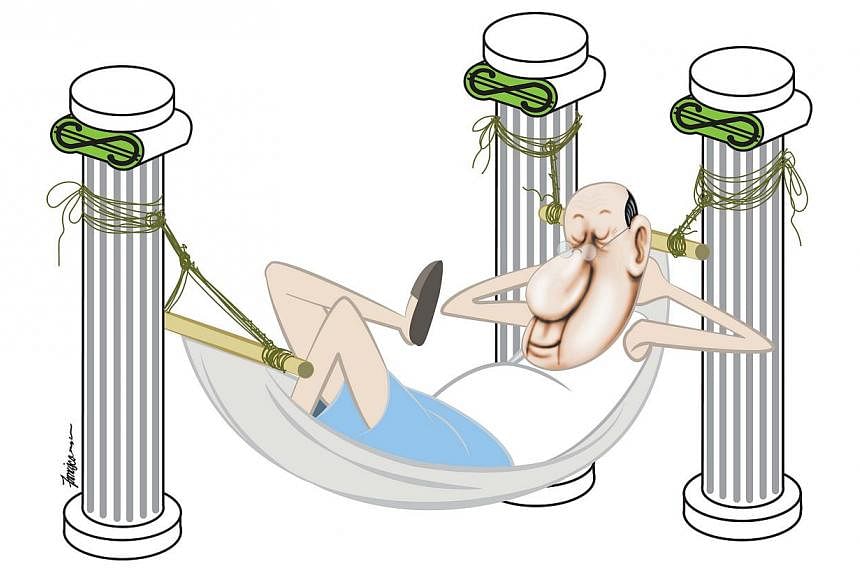Everyone has to retire eventually, so retirement planning is a non-negotiable activity. You either plan for retirement or live to regret the lack of planning.
There are three pillars to help ensure retirement adequacy that are within the state's control.
The first pillar is tight control over inflation. A 4 per cent guaranteed return is dismal if inflation is running at 4.1 per cent. Singapore's consumer price index (CPI) averaged 4.1 per cent from 2011 to 2013 (despite global disinflation) but averaged only 0.8 per cent between 2000 and 2005.
The Minimum Sum Scheme (MSS) has been adjusted upwards to bring it up to $120,000 in 2003 dollars and to compensate for inflation. I suspect the current unhappiness over the MSS would not be so acute if inflation over the past few years had been 1 per cent.
The poor are defenceless against inflation.
Even if they see it coming, they do not have the resources to exploit it. The steep climb in the Central Provident Fund (CPF) Minimum Sum in recent years to adjust for inflation demonstrates how savings can be devalued by inflation. The lower-income group is the most severely hit because their CPF savings constitute the bulk of their retirement funds.
The second pillar that the Government may use to assist in retirement financing is home monetisation - extracting equity from the value of a home. I am wary of home monetisation because to sustain this policy, there has to be an appreciating bias in home prices. This in turn requires that economic policies need to have an inflationary bias - which contradicts the need to suppress inflation as already explained.
In Singapore, home monetisation is even trickier because of the leasehold status of most homes. All leasehold homes have an underlying depreciating bias because they have the same value when the lease ends - zero. Downgrading from a very old five-room to a three-room flat may thus result in little surplus after transaction, moving and renovation costs.
From a financial planning perspective, the most efficient way to extract value from a home is at the outset - to purchase it as cheaply as possible. The savings on a cheaper mortgage, compounded over time, is the most efficient path.
The Housing Board can take the lead by going back to the basics of public housing - building high-quality, no-frills flats efficiently in order to sell them at the lowest possible prices independent of the state of the market. These low prices may need to be coupled with longer ownership requirements.
My own professional experience suggests that at the bottom end, incomes are so low that people have little savings to fund retirement. Much of the bottom 10 per cent of households can only make ends meet every month with societal assistance.
The final policy option is a National Pension Fund (NPF). Here, I would argue that Singapore needs a basic fund - which pays out a subsistence monthly pension to assist the bottom 25 per cent. Such a proposal would be controversial, particularly when it comes to funding.
I believe that this NPF can be funded by proceeds from Government Land Sales (GLS). Actually, the GLS is a misnomer because the Government has not sold any land at all; it sells leases on the land.
All the land "sold" by the Government reverts back to the state at the end of the lease - so sales proceeds are effectively long-term rental income. In this sense, the GLS provides a perpetual, recurring stream of revenue, although the actual amount is volatile on an annual basis.
Between FY2003 and FY2012, revenue from GLS totalled more than $93 billion. For budgetary purposes, this money remains unspent and is added to the Government's reserves.
A rough calculation indicates that $93 billion could fully fund an NPF that could provide a pension benefit of about $5,000 (real dollars) yearly for about 650,000 retiree citizens.
This calculation is not a policy suggestion, but it outlines what is already possible.
A proper discussion of retirement financing has to be comprehensive. It has to include inflation control, ways to monetise homes, and the establishment of a fund to provide pensions for the poor.
The author was previously a portfolio manager and CEO of a wealth management firm.

